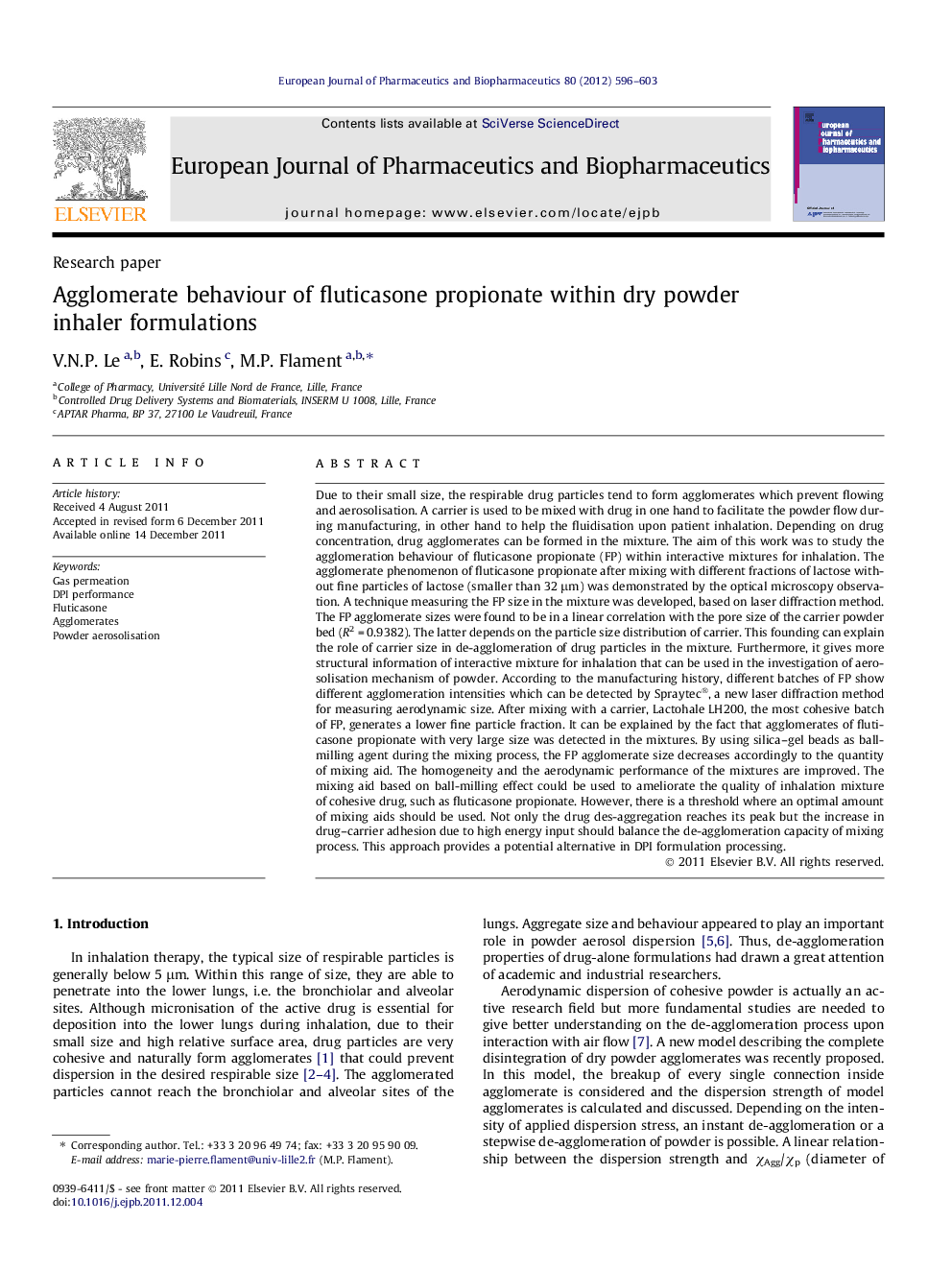| کد مقاله | کد نشریه | سال انتشار | مقاله انگلیسی | نسخه تمام متن |
|---|---|---|---|---|
| 2083888 | 1545362 | 2012 | 8 صفحه PDF | دانلود رایگان |

Due to their small size, the respirable drug particles tend to form agglomerates which prevent flowing and aerosolisation. A carrier is used to be mixed with drug in one hand to facilitate the powder flow during manufacturing, in other hand to help the fluidisation upon patient inhalation. Depending on drug concentration, drug agglomerates can be formed in the mixture. The aim of this work was to study the agglomeration behaviour of fluticasone propionate (FP) within interactive mixtures for inhalation. The agglomerate phenomenon of fluticasone propionate after mixing with different fractions of lactose without fine particles of lactose (smaller than 32 μm) was demonstrated by the optical microscopy observation. A technique measuring the FP size in the mixture was developed, based on laser diffraction method. The FP agglomerate sizes were found to be in a linear correlation with the pore size of the carrier powder bed (R2 = 0.9382). The latter depends on the particle size distribution of carrier. This founding can explain the role of carrier size in de-agglomeration of drug particles in the mixture. Furthermore, it gives more structural information of interactive mixture for inhalation that can be used in the investigation of aerosolisation mechanism of powder. According to the manufacturing history, different batches of FP show different agglomeration intensities which can be detected by Spraytec®, a new laser diffraction method for measuring aerodynamic size. After mixing with a carrier, Lactohale LH200, the most cohesive batch of FP, generates a lower fine particle fraction. It can be explained by the fact that agglomerates of fluticasone propionate with very large size was detected in the mixtures. By using silica–gel beads as ball-milling agent during the mixing process, the FP agglomerate size decreases accordingly to the quantity of mixing aid. The homogeneity and the aerodynamic performance of the mixtures are improved. The mixing aid based on ball-milling effect could be used to ameliorate the quality of inhalation mixture of cohesive drug, such as fluticasone propionate. However, there is a threshold where an optimal amount of mixing aids should be used. Not only the drug des-aggregation reaches its peak but the increase in drug–carrier adhesion due to high energy input should balance the de-agglomeration capacity of mixing process. This approach provides a potential alternative in DPI formulation processing.
Mixing process is a critical operation in the manufacturing of DPI formulations. FPF improvement depends on the amount of mixing aid. This is in relation with the FP agglomerate size that decreases gradually when increasing the quantity of mixing aid.Figure optionsDownload high-quality image (178 K)Download as PowerPoint slide
Journal: European Journal of Pharmaceutics and Biopharmaceutics - Volume 80, Issue 3, April 2012, Pages 596–603